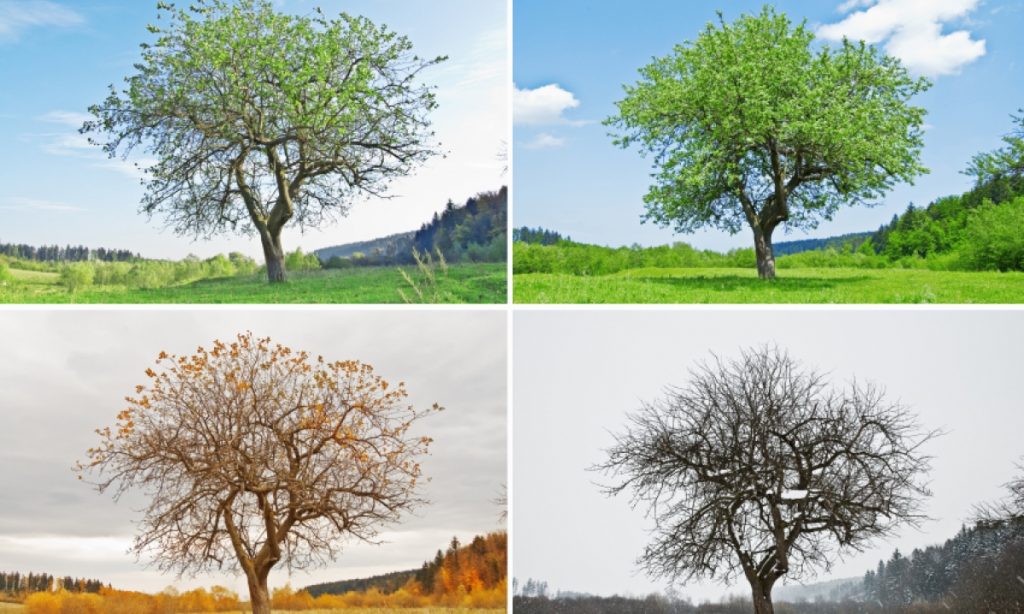by Noah Carl

I read the article by Glen Bishop in Friday’s Lockdown Sceptics newsletter with great interest. The author, a maths student at Nottingham University, had heard that a new paper by Imperial College researchers was predicting a deadly third wave of COVID-19 in the summer of this year. He decided to read the paper for himself, and noticed that the researchers were making one very questionable assumption: there is no seasonality to COVID-19.
Because he couldn’t quite believe this, Bishop emailed the researchers to check whether he had made a mistake. No, they told him: their model does assume zero seasonality. As a justification, Bishop received a paper titled “Misconceptions about weather and seasonality must not misguide COVID-19 response”, which was published in August of last year. However, he wasn’t convinced, describing the paper as “a political commentary on the consequences of what the virus being seasonal would mean for American politics, rather than a purely scientific paper”.
In the next part of his article, Bishop compared the daily COVID-19 death numbers in four countries: Brazil, Peru, Sweden and the UK. These countries differ in important ways. Peru and the UK implemented extensive lockdowns, whereas Brazil and Sweden took a more relaxed approach. On the other hand, Brazil and Peru are located in the southern hemisphere, whereas Sweden and the UK are located in the northern hemisphere. Bishop reasoned that, if seasonality is an important driver of the pandemic, countries in the same hemisphere should resemble one another. But if only lockdowns matter, countries with similar policies should resemble one another.
As many readers will already be aware, both Brazil and Peru saw deaths peak in June or July and then fall in September, whereas both Sweden and the UK saw deaths rise in March and then fall in May. This suggests that hemisphere matters more than policies in explaining the distribution of COVID-19 deaths over the year. In fact, not a single European country saw deaths rise during the summer, even among those that were spared a deadly spring wave.
Bishop’s criticisms of the Imperial College model are well-taken. In the remainder of this essay, I want to present additional evidence for the seasonality of COVID-19. Before looking at studies that deal specifically with COVID-19, it is worth mentioning that other human coronaviruses are known to be seasonal, with the peak of infections occurring in February (in the northern hemisphere). As one recent study – which analysed eight years of data on a cohort in Michigan – concluded, “Coronaviruses are sharply seasonal”. Hence it would be somewhat surprising if COVID-19 didn’t behave in the same way.
There are several mechanisms that may account for the seasonality of coronaviruses. The first is simply that people spend more time indoors in the winter, leading to more opportunities for transmission. A second is that respiratory droplets remain airborne for longer in cold weather, so they are more likely to enter someone’s nose or mouth. A third is that blood vessels constrict in cold temperatures, which may reduce our immune system’s ability to kill viruses in the nasal passage. A fourth is that viral particles may degrade more quickly when exposed to sunlight. And a fifth is that UV light may boost our immune systems by facilitating the production of vitamin D.
Since the pandemic began, a number of studies have been published (either as preprints or journal articles), which together provide strong evidence for the seasonality of COVID-19.
First, Italian researchers analysed the relationship between temperature and the COVID-19 infection rate across Italian regions during the spring wave of the pandemic. They found that “climate and environmental factors explain 63% of regional differences”, and that “temperature is the top driver”.
Second, Brazilian researchers analysed the relationship between temperature and confirmed COVID-19 cases across cities in Brazil up to the end of March. They observed “a negative linear relationship between temperatures and daily cumulative confirmed cases of COVID-19 in the range from 16.8 °C to 27.4 °C”.
Third, US researchers analysed the associations of air temperature and specific humidity with the SARS-CoV-2 reproduction number across US counties up to the end of August. They concluded that “cold and dry weather are moderately associated with increased SARS-CoV-2 transmissibility, with humidity playing a larger role than temperature”.
Fourth, British and Israeli researchers analysed the relationship between the UV index and the daily number of COVID-19 infections in the UK. They found “an intriguing empirical anti-correlation” between the two variables, “with a correlation coefficient of -0.933 over the period from 11 May (when the first UK lockdown ended) to 28 October 2020”.
Fifth, Chinese researchers analysed the associations of temperature and relative humidity with cases and deaths from COVID-19 in a sample of countries up to the end of March. They found that “temperature and relative humidity were both negatively related to daily new cases and deaths”, which suggests that “the COVID-19 pandemic may be partially suppressed with temperature and humidity increases”.
Sixth, German researchers analysed the relationship between the UV index and the number of COVID-19 deaths in a sample of countries up to May 8th. They found that “a permanent unit increase in UVI is associated with a 1.2 percentage points decline in daily growth rates of cumulative COVID-19 deaths”, which represents a “significant percentage reduction in terms of daily growth rates”.
Seventh, US researchers analysed the relationship between climatic variables and COVID-19 growth rates across countries during the first four months of the pandemic. They were able to explain “36% of the variation in maximum COVID-19 growth rates based on weather and demography (17%) and country-specific effects (19%)”. In their analysis, “UV light is most strongly associated with lower COVID-19 growth”.
Eighth, US and French researchers analysed the relationship between climatic variables and COVID-19 cases across national and subnational units up to April 10th. They found that “ultraviolet (UV) radiation has a statistically significant effect on daily COVID-19 growth rates”, whereby “a SD increase in UV lowers the daily growth rate of COVID-19 cases by ∼1 percentage point” over the next two-and-a-half weeks.
Although these studies varied in terms of the size of the effect they detected, and the specific variable that was most important (e.g. temperature versus UV light), all found evidence for seasonality. Of course, climatic variables that oscillate with the season are by no means the only factors influencing the pandemic’s trajectory. (Human behaviour matters too.) But they appear sufficiently important that leaving them out of your model entirely strikes one as a major oversight.
Noah Carl writes about COVID-19 and other topics in his Substack newsletter. You can follow him on Twitter @NoahCarl90.











Donate
We depend on your donations to keep this site going. Please give what you can.
Donate TodayComment on this Article
You’ll need to set up an account to comment if you don’t already have one. We ask for a minimum donation of £5 if you'd like to make a comment or post in our Forums.
Sign UpLatest News
Next PostLatest News